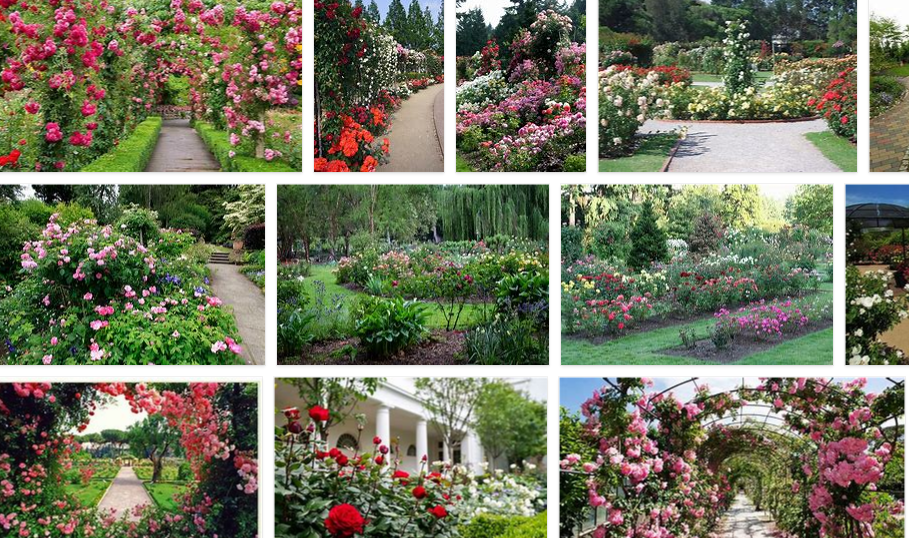A rose garden is a small outdoor space, often open to the general public, designed to present and encourage the growth and reproduction of various rose species or garden roses. Rose gardens can be constructed in a variety of ways, ranging from a simple patio walkway design through to an elaborate flower garden incorporating multiple levels, climbing roses, sundials, hanging baskets and trellises. Rose gardens can also be built as a simple raised bed of paving bricks with a choice of fabric materials. It is important to choose suitable plants for the rose garden, both for the blooms and texture and coloration on the surrounding area. The location and placement of the garden are crucial in supporting the growth and productivity of the rose plants. A rose garden should allow for natural drainage and should be placed in an area that receives regular sunshine and enough shade to encourage root growth.
The first rose garden was built in 1902 at White House, a country estate in Wiltshire, England. The conservatory was designed by the noted French landscape architect Frands des Anglais, who designed the garden to promote a healthier atmosphere through the cultivation of Heather and flowers. In keeping with traditionalist gardening techniques, the conservatory rose garden was designed to minimize damage from adverse weather conditions and to provide abundant sunlight. Frands Des Anglais, considered to be the father of Conservatories, designed the conservatory in a style similar to French chateau architecture, with glass sides and French doors on the main door. The entrance to the garden is via the large French doors and the building is surrounded by a massive vaulted ceiling, which is made of stained glass.
In planning a future Rose Garden, whether for business or pleasure, there are a number of design considerations to keep in mind. Planning permission is required before any building can be built so if you have planned your Rose Garden prior to any construction, you will need planning permission in order to ensure your project complies with local laws. It would also be wise to consult a reputable landscape architect prior to starting work on your new rose garden, as they will be able to advise you on all the pros and cons of your proposed design. You may also wish to consider a glass wall which can be added to the front of your existing or future conservatory rose garden, giving the structure an expanded display. Other structures such as arbors, pergolas and trellises can also add to the beauty of your rose garden and can be easily constructed using a DIY approach.

The Rise of Rose Gardens
A rose garden or rosacea is a large garden or park, usually open to the general public, designed to provide a location where gardeners, artists, botanists, horticulturists and others can experiment with rose species or plant roses for aesthetic value or cultivation. In Rome, a rose garden was built adjacent to Trajan’s forum to allow him to have an area in which to lay out plans for the city’s expansion. One section of this garden contained a arena, gymnasium, baths, meeting rooms, wine house and baths as well as an amphitheater. This arena, known as the Roman Amphitheater, is still used today.
The idea of having a public park, or rose garden, was that citizens would be encouraged to visit the park to get and experiment with new varieties of rose plants. The gardens also acted as a venue for theatrical performances and gladiatorial games. Rose plants were so plentiful in those days that each garden held a variety of rose plants intended for display only that year. Gardeners experimented with crossing and grafting different varieties of rose plants to create hybrid forms. This process, called inter-breeding, resulted in the creation of many new varieties not found anywhere else in the world.
Throughout much of history, the practice of inter-breeding has lead to hybridization between various species of roses. This has led to many new varieties of roses being created that are not found anywhere else on Earth. Many of these varieties are so rare that they may be endangered if further breeding is not done. Rose garden designs used at public parks were generally built to provide an area in which to grow and experiment with the growth and habits of various varieties of roses.




